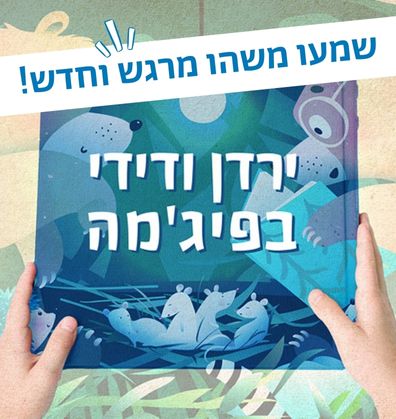מִשְׁפָּחָה וּקְהִלָּה
כיבוד הורים
כיצד מתחשבים ומכבדים את ההורים? מה ישמח את אימא או אבא? אולי מתנה? ציור? מילים אוהבות? עזרה? סיפורים על כיבוד הורים ועל הרצון הטוב להתחשב ולשמח אותם, מעוררים השראה ומחממים את הלב, ומעניקים הזדמנות לשיח רגשי וליוזמות חדשות.
סְּפָרִים
Book-Related Family Activities

יש לכם קופסה? יש לכם משחק!
יש לכם קופסה? יש לכם משחק! צפו בסרטון וגלו איך להכין משחק קופסה מתוק מדברים שיש בכל בית, בעקבות הספר “המתנה” מאת אַנְיֵיס לָרוֹשׁ!

Reading & discussing
Once you have finished reading the book, you could discuss what Michael (originally: Nicodème) did: Why did he want to give his mother a present? What do family members give one another? And what would you like to get from yours? Would you like to receive material gifts, such as toys, or are there “gifts” of conduct, intimacy, and friendship that you would like to give and receive?

Looking at the illustrations
Some of the special illustrations in the book are black and white, while others are colorful. You may enjoy looking at them with your child and discovering: which illustrations did the illustrator choose to color? Why did he choose to color those items instead of others? Would you have chosen to color a different item?
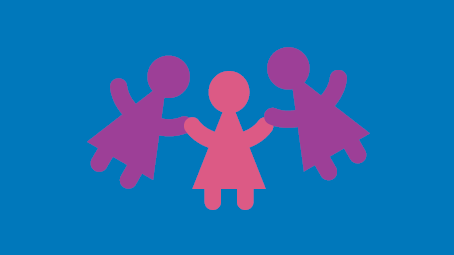
Creative fun – What's in the box?
We readers do not know which gift is contained in the box that Michael (originally: Nicodème) gives his mother. Perhaps the book is trying to tell us that it’s the act of giving that matters most. However… wouldn’t you love to know what was in there? Well, how about making a giftbox by taking a box, decorating it, and covering it with giftwrap. You could use the box to play a game called “What’s rattling in the box?”: Collect some “rattling” items, and place one in the box at a time. Then let each of the participants shake the box, listen to the item rattle inside, and try to guess what it is.

The gift of waiting
Michael (originally: Nicodème) waited patiently for this day to come, but many children find the wait a difficult challenge. You may want to share some waiting experiences together at home: making pastries with yeast, baking cookies, etc. or playing waiting games like the staring game. How patient are you?
Proposed Family Activities:
- You may want to snuggle up and look through the book together. You could follow Tani’s facial expressions and ask your child: How, do you think, Tani felt when his sister chose to give Mama a flower?
- We suggest pausing at the page on which Tani announces that he, too, needs a box for his gift, and asking your child: what will Tani’s gift for his mother be, do you think? What gift would you like your child to prepare for you?
- You could act the story out using puppets. Together, you can imagine what the puppets will do with their mother at the end of the play.
- Perhaps you could play a game called “what’s the gift?”. Each player in turn picks a toy or small object and puts it in a box. The other players try to guess what is in the box by asking questions and receiving clues. For example: Is the gift an animal? Is it something yummy? Is it made of wood?
Were you able to guess which gifts were hiding in the boxes?
- You may want to tell your child how you honored or are currently honoring your own parents, and remind one another of the ways in which your child honors you. Together you can think of an older family member you could honor – perhaps by giving them a flower or hug, or surprising them with a phone call.
- How about choosing a box and decorating it with stickers, drawings, and ribbons? Perhaps you could decide together to whom you will now give it.
Family Activities
- Duvshan and Mummy do all kinds of things together. You can go over the illustrations in the book with your children and with their help, tell the story in your own words. Invite your children to “read aloud” the story from the point of view of little Duvshan, and you can tell the same story from the perspective of Mummy Bear. At the end, you may ask your children to choose one joint activity that is described in the book, and do it (or a similar activity) together.
- Honoring one’s parents: The story presents a wonderful opportunity to share your own experience with your parents, by recalling ways in which you honor or honored your parents. Be sure to let your children know how they honor you too!
- Duvshan helps Mummy with gardening work and in the kitchen. Your children can also honor you and help out around the house. They can help set the table, match socks from the laundry, or help dust the furniture. For very young children this is a wonderful opportunity to feel needed and learn that they are capable of helping out with household chores.
- Like Duvshan, many children like to prepare little “surprises” for their parents and show their independence. They can get dressed by themselves, wash themselves, pick up and organize their toys. And just like Duvshan’s Mummy, you too can marvel at your children’s desire to help you – and in return prepare a small surprise for them!
- A “patience clock”: We all know how difficult it can be for young children to be patient. Setting an alarm clock or an hourglass can help your child know when the “being patient” time has ended. If you plan what you’ll do together when the time is over, it might help the time pass even quicker.
- Many young children have a hard time thinking up ways of being on their own. For such instances you might want to prepare an “I Can Do It All By Myself” album together with your children, including a collection of drawings that describe ideas for independent activities. Each page can contain a different activity. Your child can color the pictures and you can add short sentences such as “I can draw”, “I can cut”, “I can water plants”, etc. Looking through the album will help the children choose an activity to carry out on their own while they’re waiting for you, and afterwards, just like Mummy Bear, you can say: “Oh, my little one, you are so talented!”
Family Activities
- Notice the special illustrations in the book. Mommy and Yossi have various “accompaniers”. Which accompany Yossi each time he goes out? Which items “accompany” Mommy when is waiting at home? In your opinion, do you think there is any significance to the various “accompaniers”?
- Collage artist Liat Yaniv added to the song-story through rich illustrations, using the craft of pasting small pieces of colored paper. Young children, too, can prepare a picture by pasting pieces of paper. You can either tear or cut pieces from newspapers and journals and prepare from them a colorful
- Yossi found a harmonica and played for Mommy. You can prepare a harmonica from a comb and specially waxed paper for baking (in Hebrew, “pergament” paper): Cut the baking
paper to a width that is double the space of the comb, wrap the comb with it and blow. You may even want to create a “comb orchestra”.
- In what area or way is your child successful? It would be nice to create a medal on which is written “My Successful Son” or “My Successful Daughter”. Write or draw onto it something that the child has done successfully. You may also want to prepare a “Reward Note” about the successful things that the child did during the week, and to read it during Friday night
- “Educate a child in the way he should go”: You can discover a lot about your children if you follow after their “special steps”. You may want to join them as they engage in all kinds of entertaining and amusing activities, each following along “in the way” that he “goes”. For example, rules for various games, a dance that they invented and silly and funny songs that they made
- Are you familiar with the melody of the well-known song “Yossi, My Wonderful Child”? This is a fine opportunity not only for reading the story together, but also for singing it!

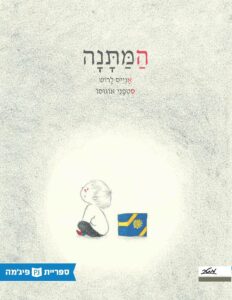 The Gift
The Gift 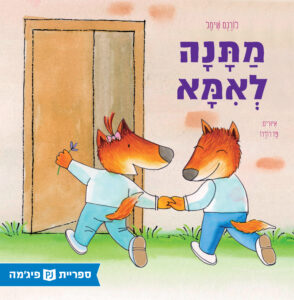 A Gift for Mama
A Gift for Mama 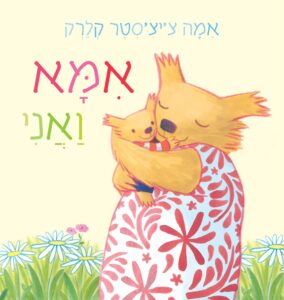 Mummy and Me
Mummy and Me 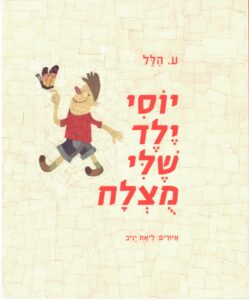 YOSSI, MY WONDERFUL CHILD
YOSSI, MY WONDERFUL CHILD 
